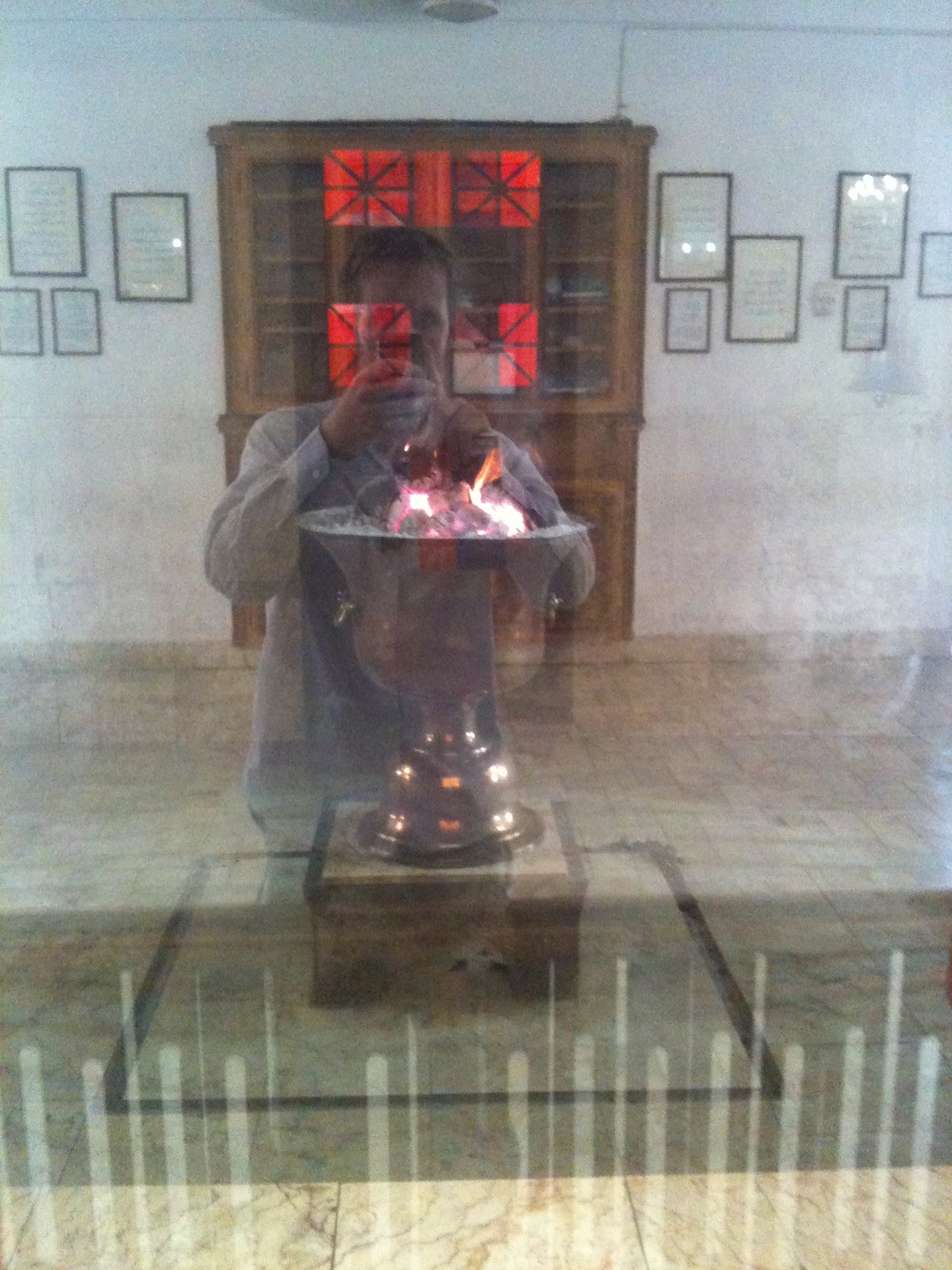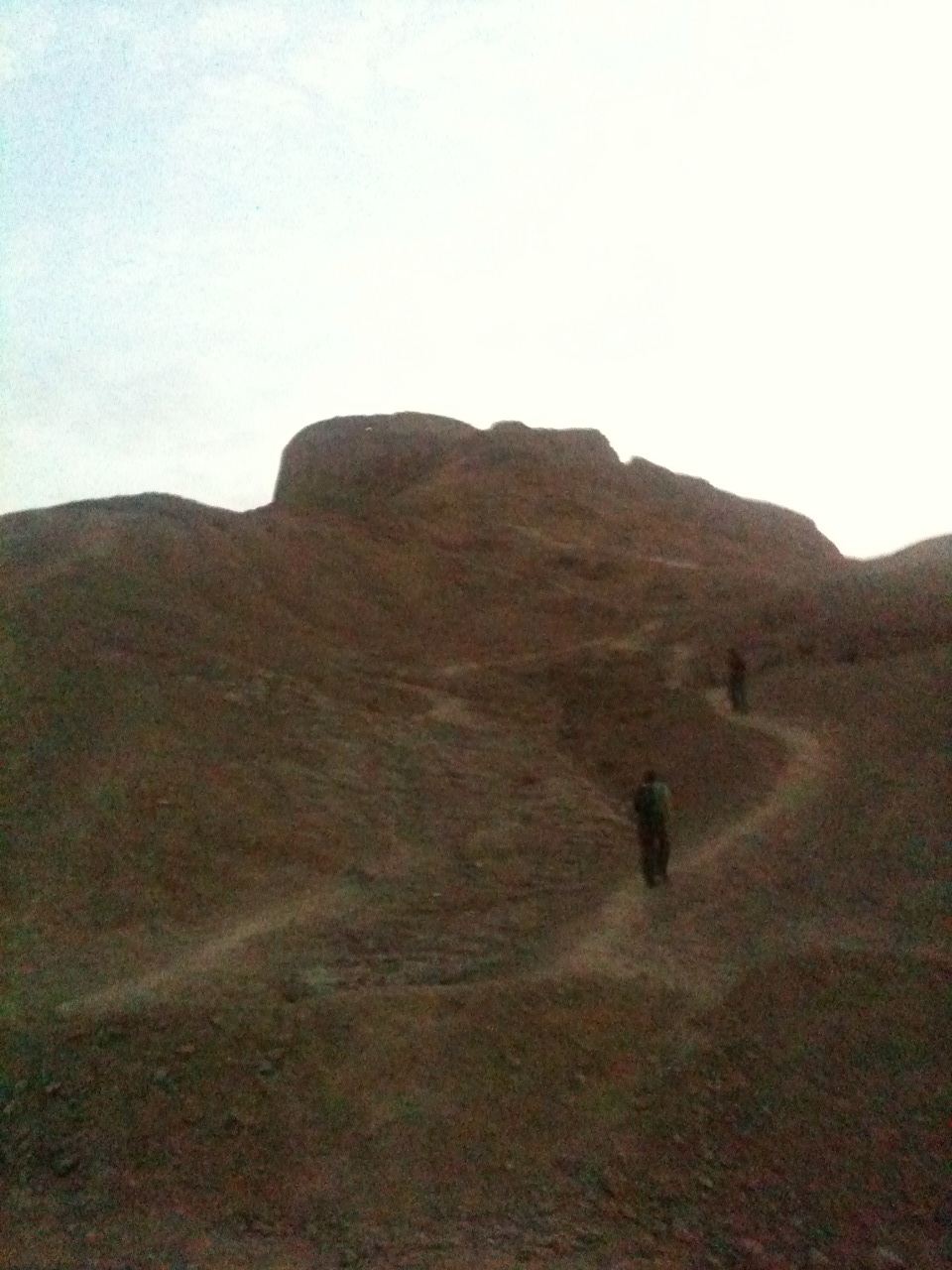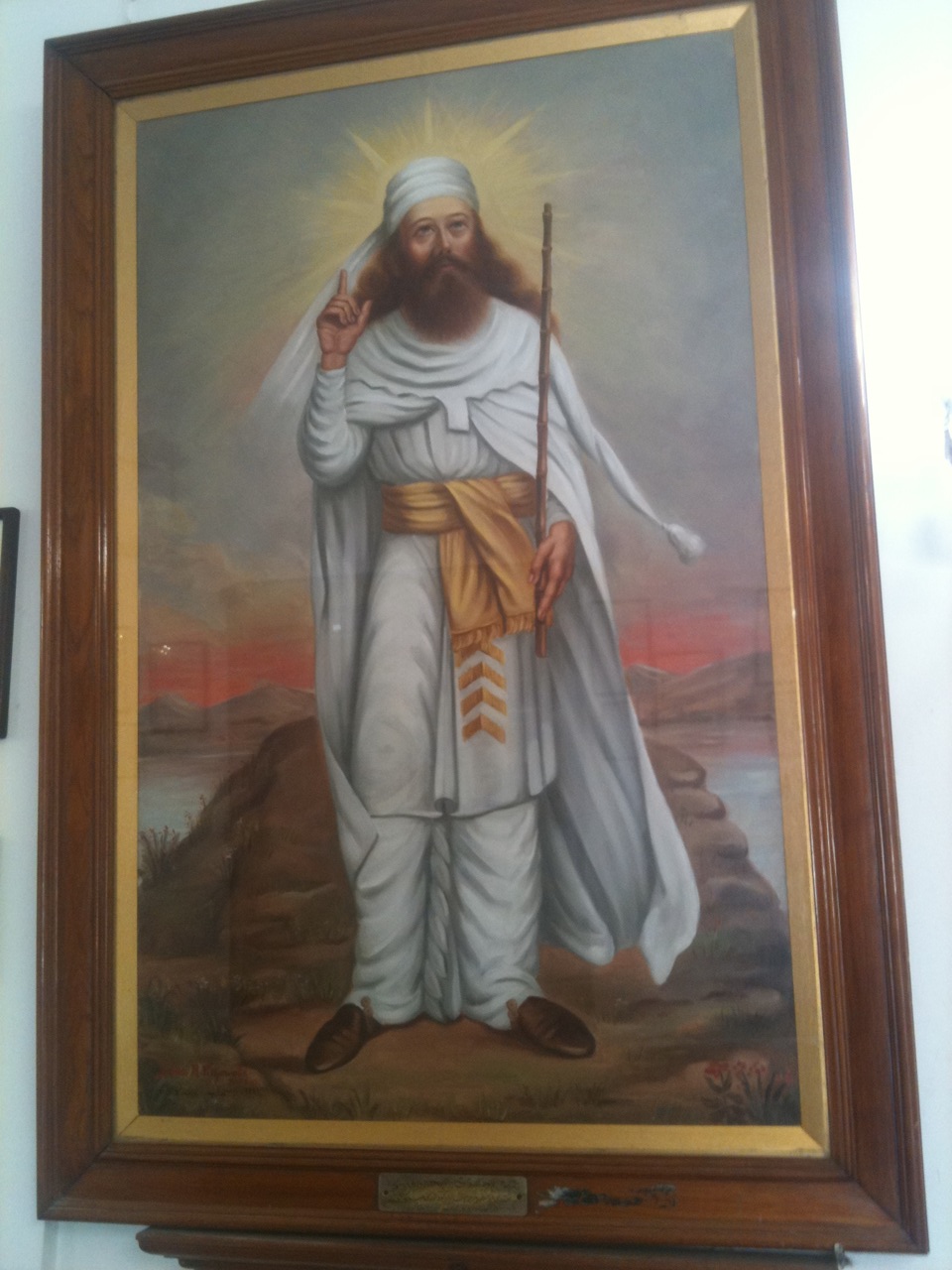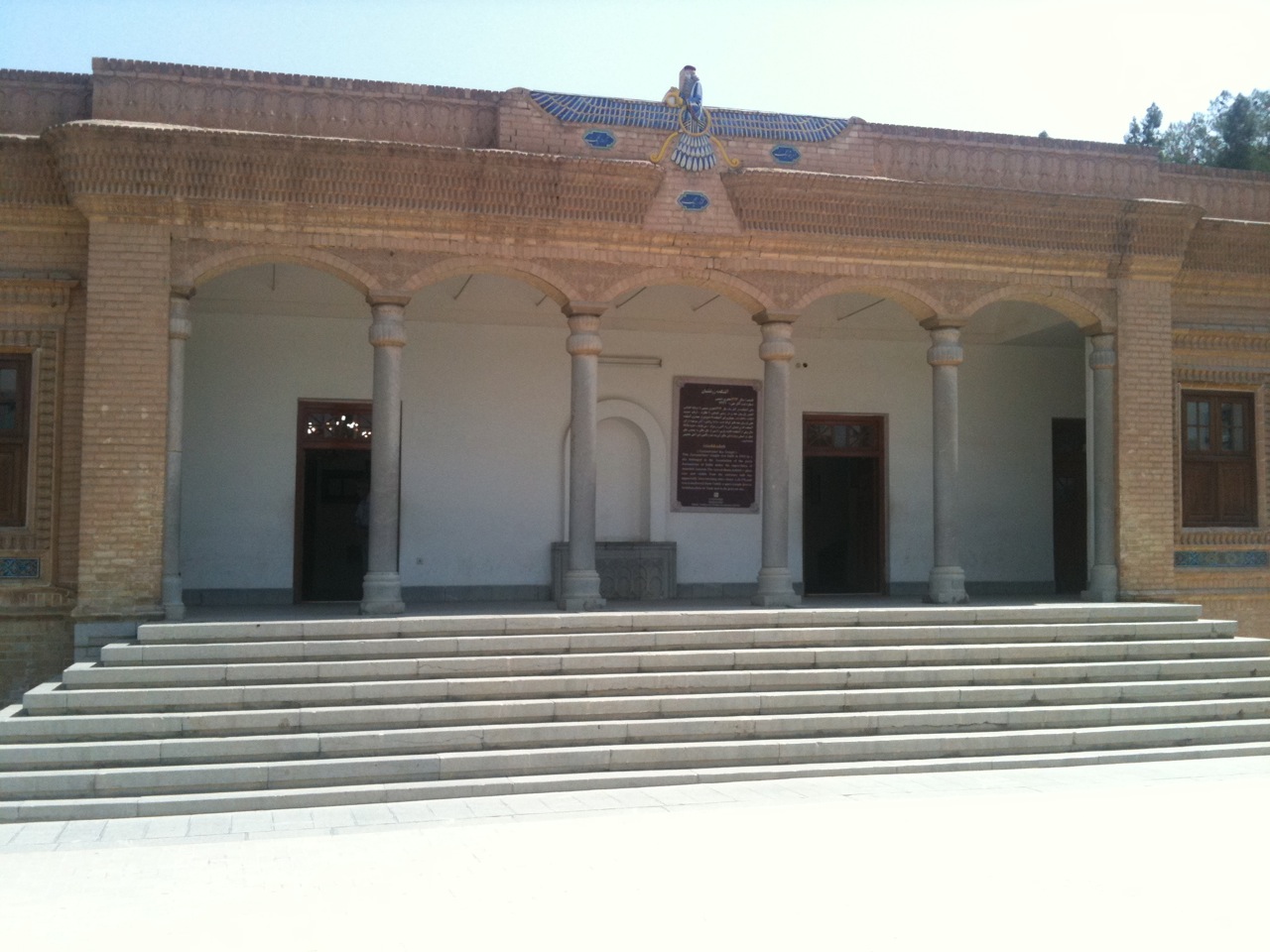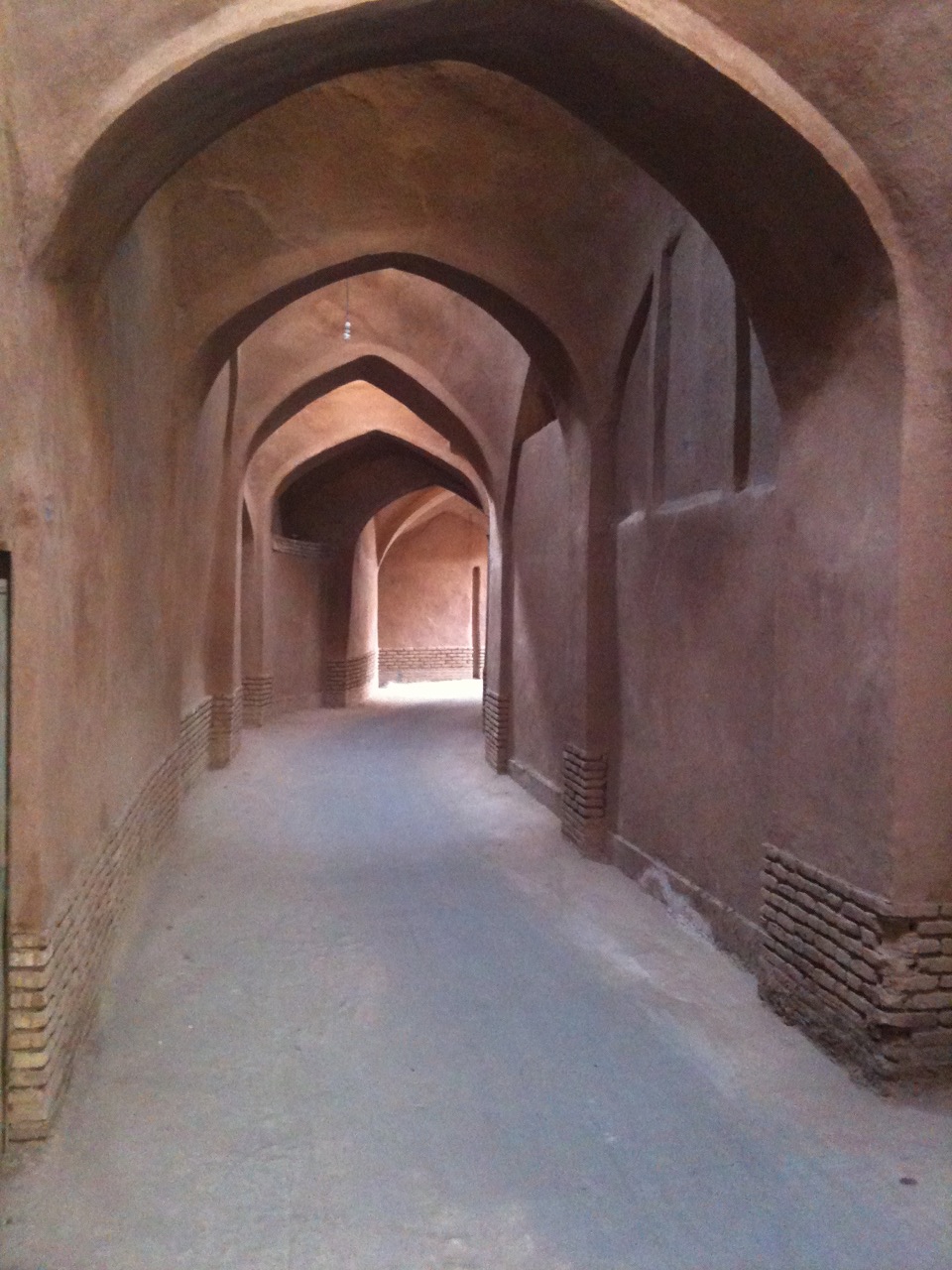Yazd is a mud brick city in the middle of a hot dry desert.
The main reason I wanted to visit Yazd is that it is one of the few cities in Iran that still has a significant Zoroastrian population. Zoroastrianism used to be the main religion of Persia, before the Arabs converted the country to Islam during the Arab Conquest. Yazd's remote location allowed a small Zoroastrian community to survive the Arab conquest and around 5000 Zoroastrians still live in Yazd today.
Zoroastrians follow the teachings of the prophet Zarathrusta, who they believe was sent by God to deliver a sacred book telling people the way they should live. Zoroastrianism is considered by many to be the oldest monotheist religion and to have had a large influence on Judaism. Indeed some scholars believe that the Jews did not become truly monotheistic until the Persians rescued the Jews from Babylon and rebuilt the second temple. Prior to their rescue by the Persians, the Jews arguably followed a "my god is bigger than your god" model where the "God of the Jews" was not necessarily the only God.
The Zoroastrians believe in the sanctity of the four elements: earth, wind, fire, and water. The most holy of these is fire/light and so Zoroastrians worship in Fire Temples. I visited a fire temple in which the sacred flame has been kept burning for 1500 years. The temple also contains pictures of Zoroaster that look strangely like Jesus.
Due to their reverence for the four elements, the Zoroastrians cannot bury their dead (pollutes the earth) or cremate them (pollutes the wind) and so they would traditionally instead place their dead in remote "towers of silence" where they could be eaten by vultures. We climbed a tower of silence and saw the pit where bodies would once have been put.
Incidentally, Zoroastrian priests are called "Magi", and it is they who were supposed to have blessed the baby Jesus - another example of the important influence the Zoroastrians had.
The Zoroastrians also have the coolest logo of any religion: a man holding a ring, surrounded by the wings of a bird. I really want to get a Zoroastrian t-shirt.
Most of the buildings in Yazd are made of mud bricks - constructed from mud and straw. This is a similar construction method to that used in the city of Bam, which famously collapsed in an earthquake. Another weakness of mud bricks is that they erode quite quickly when it rains. Many of the building are in a poor state of repair and keeping a building in good condition requires annual restoration work.
After dinner yesterday we found ourselves walking past a building with an open door and a lot of noise coming from inside. Naturally we walked in to see what was going on. It turned out to be a traditional "Iranian Gym" where people do an exercise regime that involves waving heavy clubs around, praying, and spinning around until you get really dizzy. The participants let me have a go with their clubs are they definitely demand a lot of wrist strength.
Yazd had made a lot of adaptions to allow people to live in such a hot dry environment. Underground tunnels transport water from the mountains to the city. Most large buildings have an underground basement with a pool that this water flows through. Most businesses shut down during the heat of the day - from about 1-5pm.
I said yesterday that Iran is a surprisingly civilised country relative to the way they are portrayed in the west. There is one major exception to this. The Iranians are quite possibly the worst drivers in the world. Indeed a friend tells me they have the highest rate of fatalities per capita of any country in the world. It is difficult to get across in words how bad the driving is here. Traffic lights are merely suggestions. Swerving is always preferable to braking. There is no notion of "lane" and only the vaguest concept of "correct side of the road" or "one way street". Driving on the pavement is normal. At one point I was in a taxi that entered a motorway by driving up the exit lane and then doing a u-turn. A coach I was in passed another vehicle by driving on the central reservation. A friend was in a bus that missed an exit and so reversed back up the motorway. No cars stop at pedestrian crossings to let people cross. Instead the normal procedure seems to be to just walk slowly and deliberately across the road and hope that all the cars swerve round you (nobody slows down). Crossing the road in Iran is rather like jumping out of a plane: the first time you do it you are convinced you are going to die. You can forget about crime, the government, or American bombs, by far the biggest danger in Iran is the drivers.
Iranians are also ridiculous litterbugs. Convention seems to be to just throw rubbish onto the street. The area beside the motorways is a sea of discarded cans and food wrappers.
